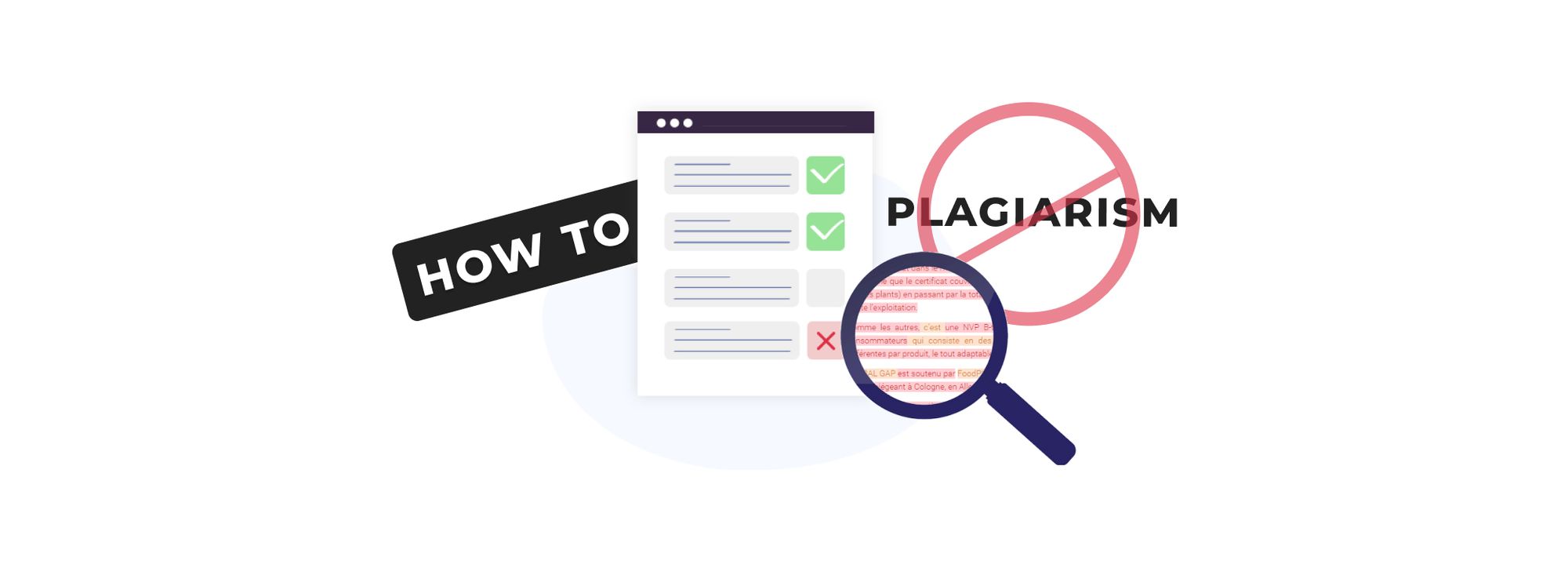Whether you are writing a term paper, drafting an article for a newspaper or blogging online, copying anyone’s work, even your own is plagiarism. Learn how to check for plagiarism quickly and easily.
What is Plagiarism?
The Merriam-Webster dictionary defines plagiarism as:
- “To steal and pass off (the ideas or words of another) as one’s own: use (another’s production) without crediting the source.
- To commit literary theft: present as new and original an idea or product derived from an existing source.”
Copying someone else’s work or ideas is bad enough, but the real crime of plagiarism is that the perpetrator takes credit for the work as their own. Plagiarism is, by all definitions, plain and simple, fraud.

Types of plagiarism
Plagiarism can range from copying entire works to a small sampling of an author’s writing or just not citing a reference correctly. The various forms of plagiarism are.
- Global Plagiarism: Global Plagiarism is copying an entire paper or article or having someone else write it for you and calling it your own.
- Paraphrasing Plagiarism: Even if you take something and gently paraphrase it but do not credit the original source, this is plagiarism too.
- Verbatim Plagiarism: When you copy and paste entire paragraphs, this is verbatim plagiarism, and it is illegal.
- Mosaic Plagiarism: Mosaic Plagiarism is when you copy and paste bits and pieces to patchwork together an original article that is made up of stolen material.
- Self-plagiarism: When you re-use work that you have already published or submitted, this is self-plagiarism, and it too is committing fraud.
- Incorrect Citation: If you copy and paste a quote and forget to use quotation marks or incorrectly cite the author, you are committing plagiarism.
Consequences of Plagiarism
Although plagiarism may seem like an innocent crime where no one gets hurt, it is actually very serious and can result in expulsion from school, failing the class, fines, imprisonment, legal troubles, and even destruction of your personal and professional reputation. For the victim, it may mean a loss of income and other damages. Plagiarism occurs most often in the academic world.
How to Check for Plagiarism Online
There are dozens of online resources where teachers, editors, and companies can check for plagiarism online. Using one of many plagiarism checkers, you can see in seconds whether or not any portion of a piece of writing has been copied or “borrowed” without permission and proper citation.
Step-by-Step Guide on How to Check for Plagiarism with Plagiarism Hunt
One tool you can use to check for plagiarism is Plagiarism Hunt. It is quick and easy to use and best of all, free. It works by scanning your text and running it through all the top popular plagiarism checkers online.

There are two ways to use Plagiarism Hunt; let’s walk through each.
Copy/Paste Method
- Copy and paste any text or an entire paper/article into the large box on the Plagiarism Hunt home page.
- Click the blue “Check Text” button.
- You will then see each checker listed, the plagiarism result (percentage), and the full report’s cost. You can click the green button to purchase.
Upload from a Computer
- Click the small box on the Plagiarism Hunt home page where it says, “Upload from Computer”.
- A pop-up box will ask for your email address to send you the results.
- You will then see each checker, the plagiarism result, and the cost for the full report. You can click the green button to purchase.
You can use this tool or any other online plagiarism checkers to ensure your purchased writing is unique and authentic.

